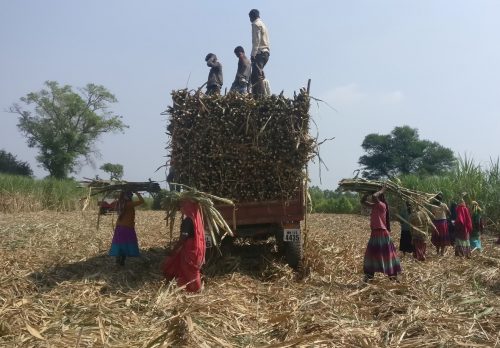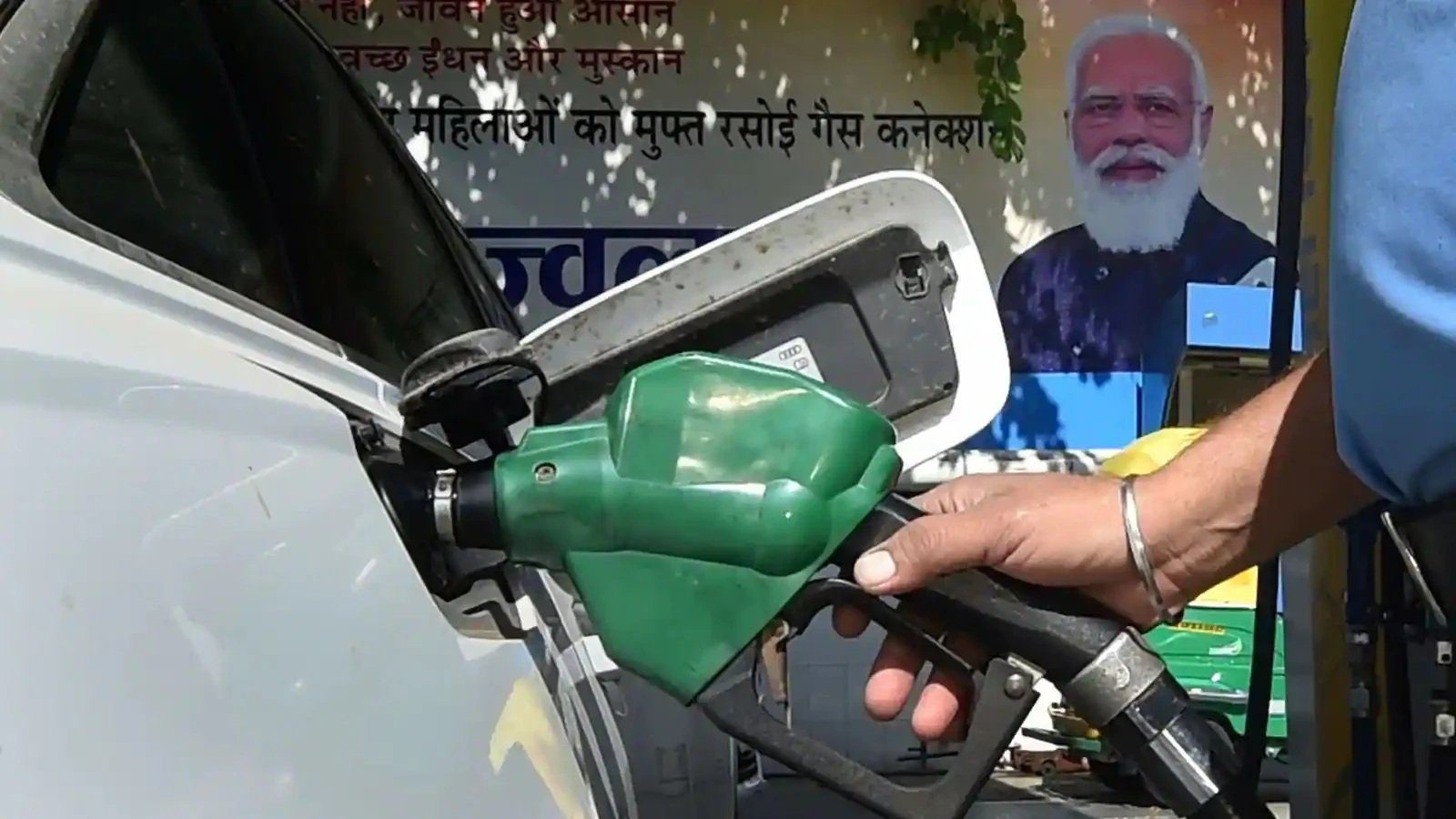Read in this article
- • India is striving to reduce energy costs and meet climate commitments
- • The central government wants sugar mills to produce more ethanol from excess sugar cane
- • Ethanol produces 20-40% lower carbon dioxide emissions than conventional fuels
- • Intensive cultivation of sugar cane puts pressure on farmers and the environment
India, which produces more sugar than it consumes, supports mixing gasoline with bioethanol after expanding its production, which may burden farmers and the environment, due to increased rates of environmental pollution, higher costs of fertilizers and pesticides, and depletion of water resources.
As it strives to lower energy costs and make good on climate pledges, India, the world’s second-largest sugar producer, has begun converting its surplus production into bioethanol, as reported recently by Eco-Business.
Ethanol can be produced from petrochemical ether or sugar cane, corn and grains, and is called bioethanol or biofuels. Biofuels are classified as renewable energy sources, given that these crops can be replanted, according to a report seen by the specialized energy platform.
Mixing gasoline with bioethanol in India
In the 2021-2022 sugar crop season, India produced 39.4 million metric tons. Government data indicates that about 26 million tons are consumed locally annually.
Since 2019, India has dealt with its sugar surplus by exporting a large portion, more than 10 million tons last year. Some ministers in India have said using it to produce ethanol is the best option, because it means faster payments and better cash flow for factories.
“Considering the costs incurred by the country to produce ethanol, the pressure on natural resources and the impact on farmers’ health, we cannot say that ethanol is environmentally friendly,” said Sudhir Panwar, a professor at the Indian University of Lucknow.
In contrast, India imports fuel in large quantities; 185 million tonnes of gasoline in 2020-2021, at a cost of $55 billion, according to a report by government think tank Neti Ayog, National Foundation for Transforming India.
Accordingly, it is proposed to blend gasoline with bioethanol, as a method of using sugar that is not consumed locally while achieving energy independence.
Niti Ayog estimates that mixing gasoline with bioethanol, at a “20-80” ratio, will save the country at least $4 billion annually by 2025.
Last year, India used 3.6 million tons (about 9%) of sugar to produce ethanol, with the aim of mixing gasoline with bioethanol, as it aims for this use to reach between 4.5 and 5 million tons in the 2022-2023 season.
In 2003, the Indian government launched its bioethanol gasoline blending programme, with the aim of obtaining a 5% ethanol blend. Ethanol currently accounts for about 10% of the mix, according to information monitored by the specialized energy platform.
By 2025-2026, the Indian government is targeting this to reach 20% and is presenting the policy as a win-win that “will help India enhance energy security, enable domestic businesses and farmers to participate in the energy economy and reduce vehicle emissions.”
Since 2018, the government has introduced a subsidy scheme, with financial assistance on loans, to stimulate the establishment and expansion of sugar factories.
Hidden emissions and food security concerns
The Indian government is of the opinion that the “properties of ethanol help in complete combustion and reduce vehicle emissions such as hydrocarbon, carbon monoxide and particulate matter”.
She adds that mixing gasoline with bioethanol at a rate of (20-80%), especially for fuel for four-wheeled cars, reduces carbon monoxide emissions by 30%, and mixing it with hydrocarbons reduces emissions by 20% compared to gasoline only.

Furthermore, when ethanol burns, it emits 20-40% less carbon dioxide than conventional fuels, and because plants absorb carbon dioxide as they grow, it can be described as carbon neutral.
However, experts caution that this assessment ignores the greenhouse gas emissions present in the ethanol supply chain, according to information seen by the specialist energy platform.
Research on biofuels in the US last year found that the carbon intensity of ethanol could be 24% higher than that of gasoline, due to emissions from land-use change, increased fertilizer use and damage to ecosystems.
It should be noted that 660,000 hectares of land in India have been converted to sugarcane since 2001, according to government data.
“Ethanol is likely to be as carbon-intensive as petroleum fuels because of carbon emissions resulting from changes in land use for growing crops, water utilization and the entire ethanol-making process,” said Devender Sharma, an agriculture and trade expert.
For their part, experts are concerned that pressure to use sugarcane for ethanol production could have a negative impact on food security.
As the price of sugarcane is increasingly linked to fuel, by mixing gasoline with bioethanol, “it will be called an energy crop,” said agricultural scientist Sudhir Panwar, former member of the Uttar Pradesh Planning Commission.
He explained that this “will lead to the cultivation of large areas of monoculture, which will degrade soil fertility and make the crop more vulnerable to pests. It will also lead to food insecurity due to the movement of land and water resources towards the energy crop.”
The Indian Sugar Mills Association’s general manager, Sonjoy Mohanty, said the surplus sugar that India is currently producing means that “meeting the 20% bioethanol gasoline blending targets is not a challenge.”
He added, “Going forward in the future, instead of increasing the land area, we aim to improve the yield for higher production.”
Sugarcane cultivation puts pressure on farmers and the environment

Although government subsidies benefit sugar mills and drive up ethanol prices, Arun Kumar Singh, a sugarcane farmer in the Indian village of Nanglamal, says farmers are not benefiting from this policy.
Since sugar mills require large amounts of sucrose, farmers are encouraged to switch to new varieties and to use fertilizers and pesticides.
In addition to farmers having to bear the cost of losses caused by climate, such as last year’s heat wave, Singh says the variety on his farm, which has been cultivated across India, needs more fertilizer and pesticides annually.
An expert in agriculture and trade, Devender Sharma, said: Sugar cane production has contributed to the depletion of groundwater levels in the western state of Uttar Pradesh, which is witnessing at the same time changing rainfall and drought patterns.
He added that the industry has polluted rivers by releasing large amounts of organic matter into the waterways, and sugar mills are the largest source of sewage in the state.
He explained that over time, this will make it more difficult to grow other crops, which directly threatens India’s food security, according to what was seen by the specialized energy platform.
“In Maharashtra, the second largest sugarcane-producing state in the country, 70 percent of the irrigation water goes to sugar cane while it constitutes only 4 percent of the state’s crop,” he noted.
related topics..
Also read..

Leave a Reply